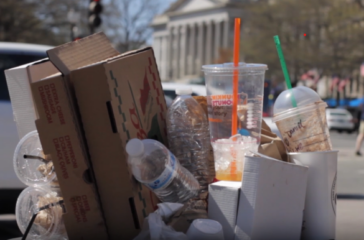Postcard from California: The global plastics crisis is a threat to human health
By Bill Walker
Last April, an annual assessment of the clarity of Lake Tahoe found it was the clearest it had been since the 1980s. But just months later, scientists reported that the iconic alpine lake straddling the California-Nevada border had alarming levels of a nearly invisible form of pollution: microplastics.
Microplastics are particles of plastic measuring less than 5 millimeters – roughly the size of a pencil eraser – generated largely from the breakdown of discarded plastic bottles and other plastic items. The US is the world’s largest generator of plastic waste, as people throw away more than 27 million tons of plastic annually.
In a study released last July, an international team of researchers found that Lake Tahoe had the third-highest concentration of microplastics out of 38 large lakes in 23 countries. Tahoe’s crystal blue waters held higher concentrations of microplastics than the floating garbage patches littering the world’s oceans, the study determined.
The researchers measured only relatively large microplastics – the width of a few human hairs or larger – not the “nanoplastics” that can be hundreds of times smaller. The Tahoe Basin has some of the most stringent environmental regulations in the US, suggesting that the probable source is airborne plastic particles from afar contaminating the snow that melts into the lake.
Microplastics’ threat to fish, marine mammals and other wildlife is well documented. Now there’s growing evidence that they’re also hazardous to people.
Last year, a report from the California State Policy Evidence Consortium, commissioned by state legislators, raised concerns about microplastics’ suspected human health effects, including reproductive harm, respiratory problems and biological changes that could lead to intestinal cancer.
 EWG
EWG